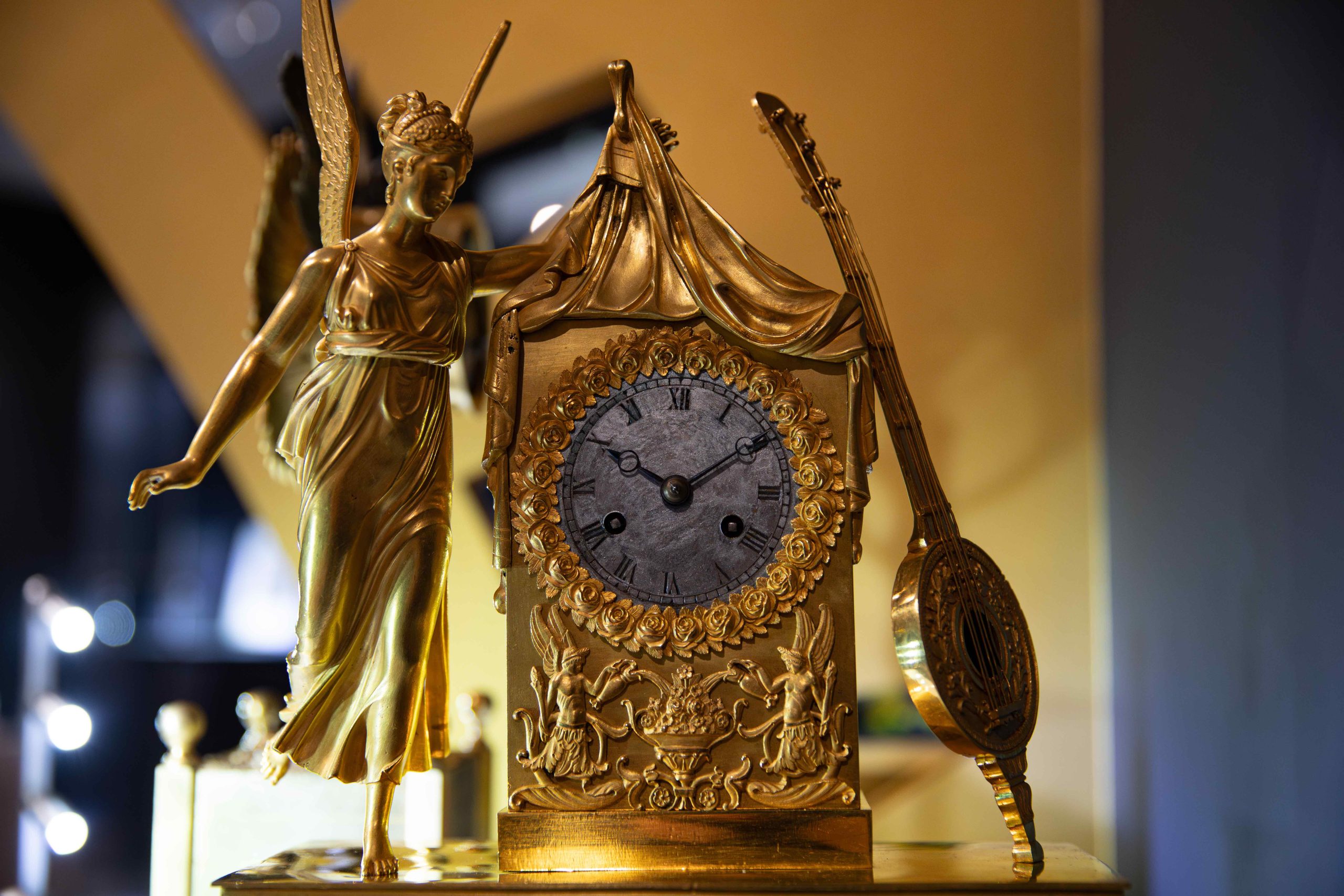
Friday and Saturday — from 10:00 to 21:00
The last Tuesday of the month is a day off
The exhibition presents more than 30 French mantelpiece clocks of the late XVIII – early XIX century. The objects demonstrate not only the achievements of watch mechanics of that time. They are unsurpassed works of decorative and applied art, showing the skills of French designers and bronzers. The compositions decorating the mantelpiece clock refer to ancient mythology, historical events and plots of chivalric novels.
The theme of love and time runs through the design of French clocks of the XVIII – XIX centuries. The main character of the allegorical compositions “Love dominates Time”, “Hope feeds Love” is Cupid (Eros), the god of Love, the lord of the Ether and the winner of his antagonist Chronos. Chronos, who embodied Time, was depicted in the Renaissance era in the image of an old man with a scythe — a symbol of frailty and was a very popular figure in the design of clock devices.
The Empire style watches of the early 19th century are full of heroic images: in France it was the time of the Great French Revolution, the coming to power in 1804 of Emperor Napoleon Bonaparte, wars and military campaigns. One of the main objects of the exhibition is a clock that has become the embodiment of the spirit of the Empire era, often called the “Empire Manifesto” — “The Oath of the Horatii”, created around 1805 and based on the painting of the same name by J.-L. David.
It is noteworthy that the theme of Russian heroics is reflected in the compositions of the French-made clocks. The exhibition presents the watches “Minin and Pozharsky”, “Peter the Great on Lake Ladoga”. The model and the first batch of “Minin and Pozharsky” clocks were ordered by Nikolai Nikitich Demidov, a representative of the dynasty of Russian industrialists from Tula, to the famous Parisian bronzer Pierre-Philippe Tomir. The clocks were especially popular among the Russian aristocrats who participated in the war of 1812 as the personification of patriotism.
The mechanisms of French clocks of the XVIII – early XIX centuries were made mainly in workshops of the manufactory type, then at industrial enterprises.
The exhibition “Time. History. Myth. The French clocks from the collection of the State Historical Museum” in the branch of the SHM in Tula will open on November 20, 2024 and will run until March 17, 2025.
Additional information by phone: 8 (4872) 77-31-65.

